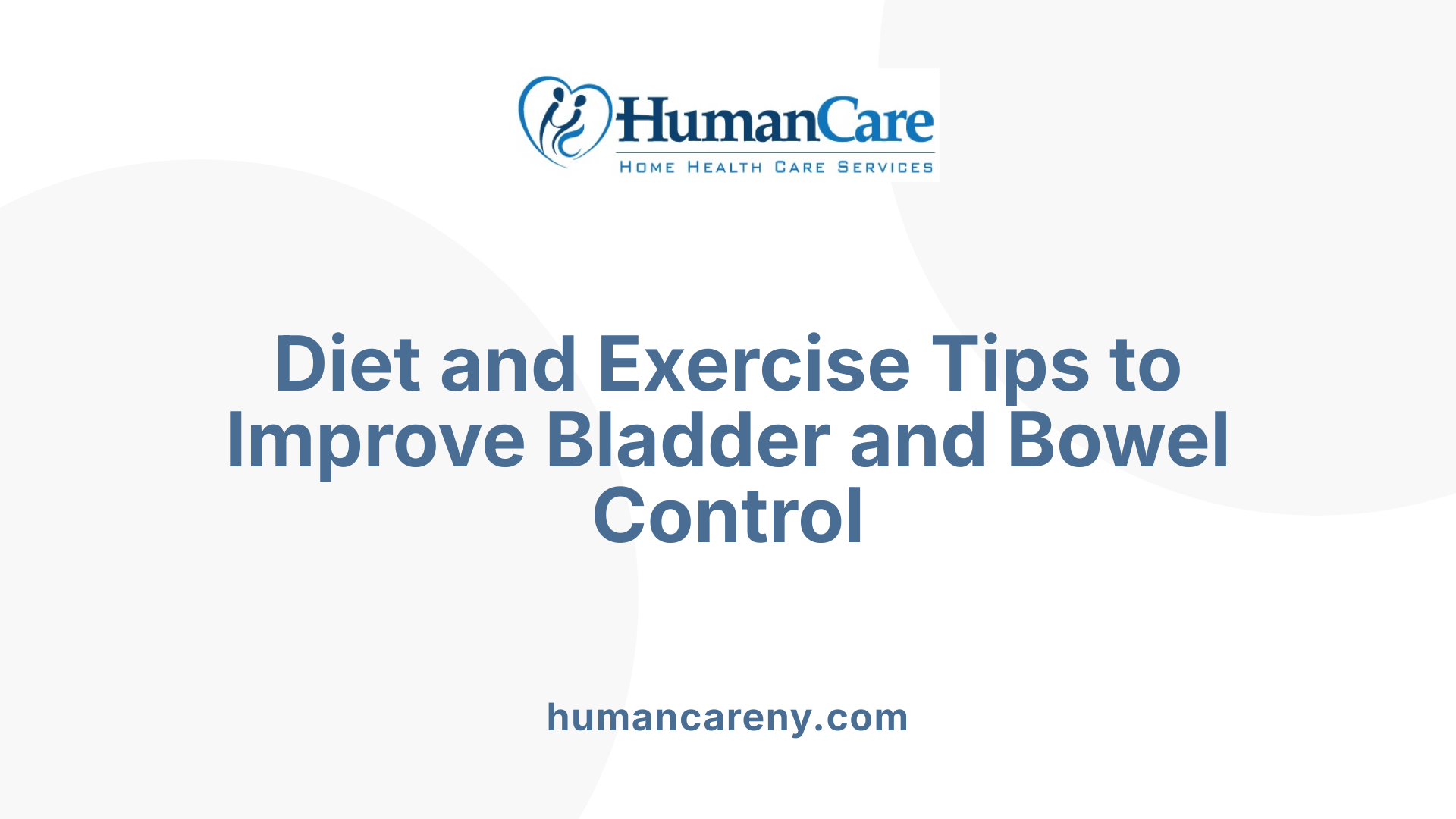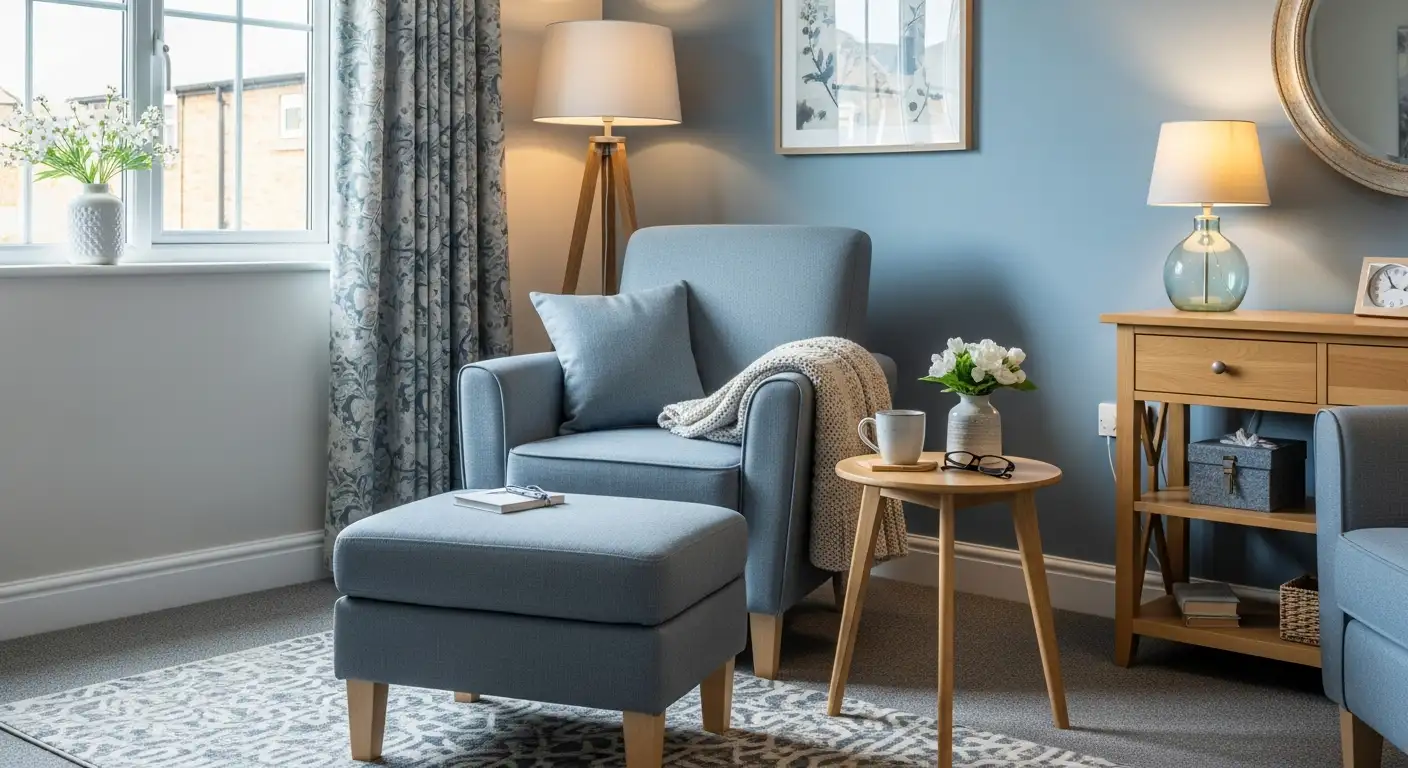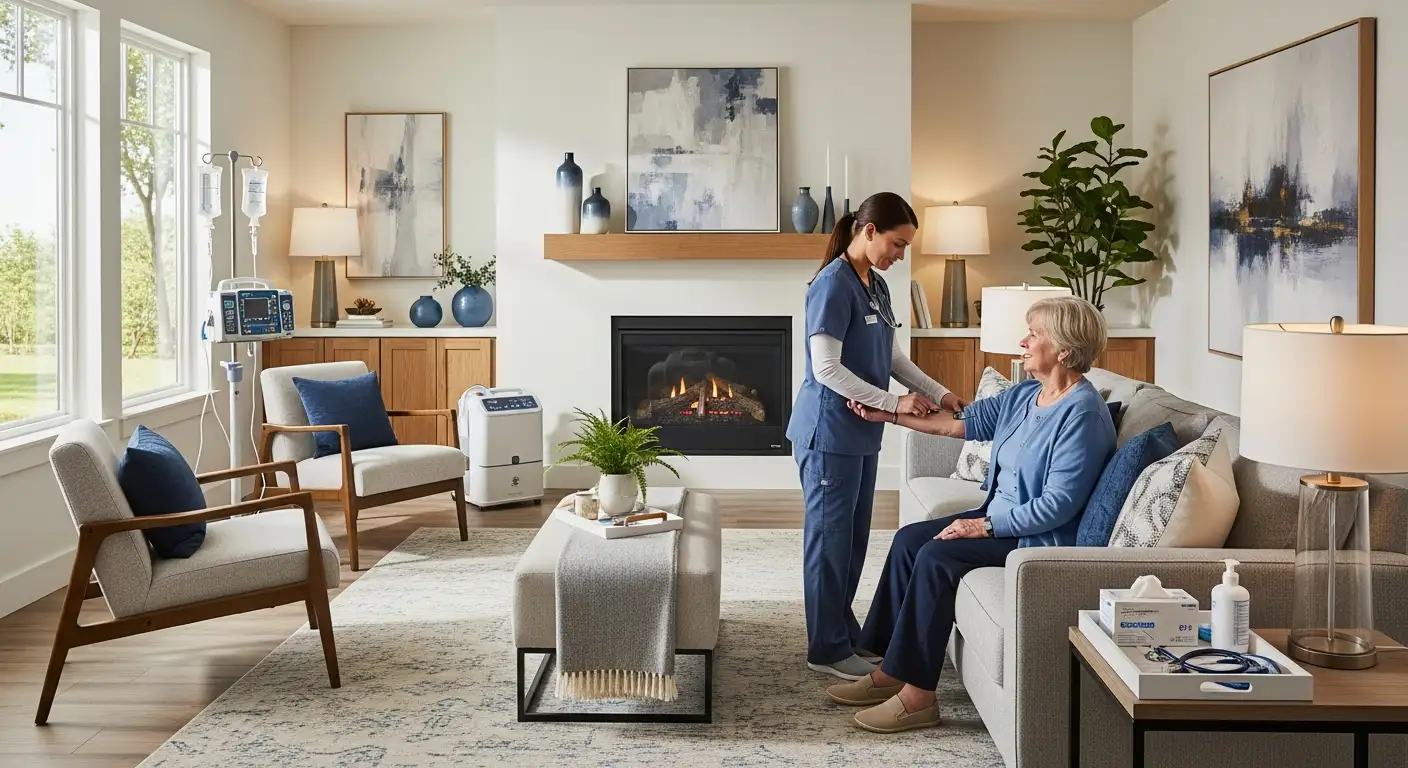Understanding and Managing Incontinence Through Homemaking
Incontinence in the elderly is a common yet often distressing condition that requires compassionate and informed homemaking care to maintain dignity, skin health, and overall well-being. This article explores how tailored homemaking strategies can effectively support seniors dealing with bladder and bowel control issues, emphasizing the importance of a holistic approach that includes medical assessment, environmental adaptations, and emotional support.
Medical Assessment and Personalized Care Planning

What are the common causes and types of incontinence in the elderly?
Incontinence among elderly individuals often results from a combination of age-related physical changes and underlying health conditions. Common causes include weakening of the pelvic and bladder muscles, neurological issues, prostate problems in men, and chronic illnesses like diabetes and Parkinson’s disease. Medications can also contribute to urinary or bowel control issues.
There are several types of incontinence, each with different underlying mechanisms:
- Urge incontinence: a sudden, intense urge to urinate caused by an overactive bladder.
- Stress incontinence: leakage of urine during physical activities such as coughing, sneezing, or lifting.
- Overflow incontinence: occurs when the bladder does not empty completely, often linked to prostate enlargement or nerve damage.
- Functional incontinence: results from physical or cognitive impairments that prevent reaching the toilet in time.
Identifying the specific type and cause requires a thorough assessment by healthcare professionals. Proper diagnosis helps determine appropriate treatment options, which may include medication, pelvic exercises, or surgical interventions.
What strategies and methods can be used for managing incontinence at home for the elderly?
Effective incontinence management at home combines medical guidance with practical caregiving techniques. Regular evaluation by healthcare providers ensures treatment plans remain suitable.
Key management strategies include:
- Use of incontinence products: absorbent pads, protective underwear, and external catheters tailored for comfort and fit.
- Hygiene practices: frequent changing of products, gentle cleaning with mild soap and water, and barrier creams to prevent skin irritation.
- Behavioral techniques: bladder training and scheduled toileting help increase bladder control.
- Pelvic floor exercises: Kegel exercises strengthen support muscles around the bladder.
- Diet and fluid management: avoiding irritants like caffeine, alcohol, and spicy foods; maintaining adequate hydration without overloading the bladder.
- Environmental modifications: installing grab bars, improving lighting, and ensuring clear pathways to the bathroom.
Consistent communication with healthcare professionals can help monitor the condition, adjust treatments, and address underlying causes. Taking a proactive and respectful approach enables seniors to maintain dignity and quality of life.
Through comprehensive planning and supportive caregiving, elderly individuals can manage incontinence effectively, reducing discomfort and preventing complications such as skin infections and falls.
Incontinence Products and Skin Care for Comfort and Safety

What products are available to help manage incontinence, and how should they be used?
Managing incontinence effectively involves a variety of products designed to protect skin integrity and maintain dignity. Common options include absorbent pads, protective underwear, external catheters, and commodes.
Choosing the right product depends on the individual's specific needs, mobility level, and skin sensitivity. It's important to select items that fit well to prevent leaks, chafing, and skin irritation. Products with moisture-wicking technology and odor control features can enhance comfort and uphold a sense of dignity.
Regularly changing these pads and protective garments is vital to prevent skin breakdown and infections. After each change, caregivers should clean the skin gently with mild soap and water, and thoroughly dry the area. Barrier creams or ointments can be applied to create a protective layer on the skin, especially in areas prone to moisture. Proper disposal of used products not only supports hygiene but also reduces the risk of bacterial growth and infection.
Seasonal considerations are also important. For example, extra padding or breathable materials can help avoid chafing in hot weather, while moisture-resistant fabrics are beneficial during colder months. Testing different products can help determine the most comfortable and effective option for each individual.
How can good hygiene practices and skin care prevent complications like skin irritation or infections?
Maintaining good hygiene is essential in preventing skin irritations, pressure ulcers, dermatitis, and urinary tract infections in elderly individuals with incontinence. Routine cleansing involves gentle washing with warm water and mild, pH-balanced soap to avoid stripping natural oils and causing dryness.
Caregivers should pay attention to drying the skin thoroughly after cleansing, as moisture is a primary factor in skin breakdown.
Applying barrier creams or emollients helps to protect the skin from constant exposure to moisture and irritants. These creams form a protective layer that reduces friction and shields against bacterial invasion.
Wearing disposable gloves during changing and cleaning procedures minimizes the risk of cross-contamination. Skin assessments before and after cleaning can identify early signs of irritation or skin breakdown.
Regular skin checks, combined with prompt attention to any redness, soreness, or rash, can prevent worsening of skin issues.
In addition to routine hygiene, ensuring the environment remains clean and dry supports overall skin health. Adopting these practices not only improves the comfort of those affected but significantly reduces the risk of more severe infections such as pressure ulcers and urinary infections.
By integrating these hygiene protocols and skin care measures, caregivers can greatly enhance the well-being of elderly individuals suffering from incontinence and prevent potentially serious skin complications.
Environmental and Behavioral Strategies in Homemaking Care

What environmental modifications support incontinence management in the home?
Creating a safe, accessible environment is crucial for effectively managing incontinence among the elderly. Practical modifications include installing grab bars near toilets and in showers to provide stability during transfers. Ensuring adequate lighting, especially at night, helps prevent falls and accidents. Placing incontinence supplies, such as pads and wipes, within easy reach allows for quick and discreet changes.
Reducing clutter and ensuring clear pathways minimizes fall risks, particularly for those with mobility challenges. Using raised toilets and commodes facilitates easier transfers, reducing strain and promoting independence. Non-slip mats in bathrooms and along walkways provide additional safety, encouraging confidence during movement. These thoughtful modifications help maintain dignity, safety, and independence while easing the physical and emotional stress associated with incontinence management.
What dietary adjustments can aid in controlling incontinence symptoms?
Diet plays a pivotal role in managing incontinence. Promoting adequate fluid intake, primarily water, helps dilute urine and prevents infections. It is equally important to limit irritants that can exacerbate symptoms, such as caffeine, alcohol, citrus fruits, spicy foods, and chocolates.
A diet high in fiber supports healthy bowel movements, reducing the risk of constipation, which can put additional pressure on the bladder and rectum. Regular bowel movements help prevent overflow incontinence and lessen discomfort. If constipation occurs, incorporating fiber-rich foods, laxatives, or stool softeners as advised by a healthcare professional can be beneficial.
Combining dietary modifications with behavioral strategies, such as scheduled toileting and avoiding bladder irritants, enhances overall incontinence control and improves comfort and hygiene.
How does bladder training and exercises contribute to incontinence management?
Bladder training is a behavioral approach that involves scheduling bathroom trips at regular intervals, gradually increasing the time between voids to strengthen bladder capacity. This technique helps manage urge incontinence by training the bladder to hold urine longer.
Pelvic floor exercises, particularly Kegel exercises, are highly effective. These exercises strengthen the muscles supporting the bladder and urethra, reducing stress and urge incontinence. It is important to perform them correctly and regularly for noticeable benefits.
Encouraging hydration helps maintain normal bladder function, while avoiding bladder irritants like caffeine and alcohol reduces urge episodes. Consistency and patience are essential, and healthcare providers can assist in developing personalized bladder training routines.
Implementing these strategies can significantly improve urinary control, boost confidence, and enhance the overall quality of life for seniors.
| Strategy | Description | Additional Notes |
|---|---|---|
| Home modifications | Installing grab bars, raised toilets, ensuring good lighting | Improves safety and independence |
| Dietary adjustments | Limiting irritants, high-fiber diet, adequate hydration | Supports bladder and bowel health |
| Bladder training | Scheduled bathroom trips, interval increase | Strengthens bladder capacity |
| Pelvic exercises | Kegel exercises | Reinforces pelvic muscles |
| Overall benefit | Increased control, reduced accidents, enhanced confidence | Improves quality of life |
Incorporating these environmental and behavioral strategies into home care routines equips caregivers and seniors with practical tools for managing incontinence, ultimately fostering a safer, healthier, and more dignified living environment.
In-Home Care and Community Resources for Effective Support
What professional services are available to support managing incontinence at home?
Managing incontinence in elderly individuals involves a variety of professional healthcare services that can substantially improve quality of life. NHS continence clinics are specialized centers where healthcare professionals conduct comprehensive assessments, including medical history reviews, physical examinations, urine tests, and bladder ultrasounds. These evaluations help determine the underlying causes and tailor appropriate treatment plans.
Home visits by community nurses and private caregivers are vital for ongoing support. These professionals assist with toileting routines, skin care, and the delivery of suitable incontinence products such as pads, protective garments, or external catheters. They also monitor skin condition regularly to prevent irritation, infections, and pressure ulcers.
Physiotherapists may provide pelvic floor muscle training and exercises like Kegels to strengthen bladder support muscles, reducing episodes of leakage. Occupational therapists can recommend modifications to the home environment, such as installing grab bars, raised toilets, and accessible pathways, which facilitate safer toileting and independence.
Medication management is another aspect of professional care, especially when incontinence is linked to underlying conditions like overactive bladder or prostate issues. Some patients benefit from bladder training techniques and behavioral therapies aimed at increasing control and reducing urgency.
Overall, these targeted medical interventions and personalized support systems created through professional consultation help manage incontinence effectively, preventing complications and supporting dignity.
How can community resources assist caregivers and elderly with incontinence?
Community resources play a crucial role in supporting both elderly individuals with incontinence and their caregivers. Support groups and advocacy organizations offer emotional comfort, shared experiences, and practical advice, helping to reduce feelings of embarrassment or isolation.
Respite care services allow family caregivers to take necessary breaks, which helps prevent burnout and ensures they can provide care with renewed patience and energy. Educational programs conducted by local health agencies teach caregivers proper hygiene routines, safe handling of incontinence products, and environmental modifications to prevent accidents.
Local health services facilitate connections to professionals such as continence nurses and social workers. These specialists develop customized care routines that respect the individual's dignity and preferences.
Support programs often include training sessions on skin care strategies, b product demonstrations, and tips to manage incontinence discreetly. They also provide resources on diet and fluid intake adjustments, which can significantly impact symptoms.
Access to community-based services decreases caregiver stress, promotes social engagement for seniors, and fosters a holistic approach to incontinence management. It ensures that elderly individuals receive respectful, consistent care while maintaining their independence and social connections.
Resources Summary
| Resource Type | Services Offered | How It Helps |
|---|---|---|
| Continence Clinics | Assessments, treatments, evaluation, and advice | Diagnosis of causes, personalized treatment plans |
| Home Care Support | Toileting assistance, skin monitoring, product delivery | Continuous, comfortable care maintained at home |
| Support Groups | Peer support, emotional reassurance | Reduces isolation, shares coping strategies |
| Respite Care | Temporary relief for caregivers | Prevents burnout, improves overall caregiving quality |
| Educational Programs | Hygiene, product use, home modifications | Empowers caregivers, improves safety |
| Professional Consultations | Medical management, pelvic exercises | Targets underlying issues, enhances control |
Implementing these community and professional resources ensures a comprehensive, compassionate approach to managing incontinence, safeguarding the health, comfort, and dignity of elderly individuals while supporting their caregivers.
Emotional and Psychological Aspects of Incontinence Care
How can caregivers best approach conversations about incontinence with the elderly?
Approaching discussions about incontinence with sensitivity and patience is essential. Caregivers should create a private, comfortable environment that respects the individual's dignity. Framing incontinence as a common health issue rather than a personal failure helps reduce shame. Using respectful language and avoiding judgment fosters trust and openness.
Active listening and asking open-ended questions encourage seniors to express their concerns freely. It is helpful to provide clear information about the condition, its causes, and treatment options, which can empower the elderly to participate actively in their care.
Normalizing conversations about incontinence and emphasizing that effective treatments are available can alleviate feelings of embarrassment. Ultimately, promoting dignity and fostering an atmosphere of support helps the elderly feel valued and understood.
What measures can support an elderly person's emotional well-being related to incontinence?
Supporting emotional health involves ensuring the elderly person retains independence and feels respected. Caregivers should consistently reassure seniors, emphasizing that they are not alone and that support is available.
Encouraging social participation and engaging in activities unrelated to incontinence can help restore confidence and foster a sense of normalcy. Maintaining a routine that respects the individual's autonomy, such as involving them in decision-making about their care, reinforces their dignity.
Regular emotional check-ins, along with fostering strong social connections, can mitigate feelings of shame or isolation. Connecting seniors with support groups or mental health services provides additional avenues for emotional support.
Providing compassionate care, listening actively, and respecting privacy are fundamental principles that help bolster psychological resilience. These strategies contribute significantly to improving the emotional well-being of elderly individuals living with incontinence and help them maintain a positive outlook despite challenges.
Supporting Quality of Life with Compassionate Incontinence Care
Effective homemaking care for seniors with incontinence is a multidimensional approach that combines medical understanding, environmental adaptations, appropriate product use, and emotional support. Through professional guidance, personalized routines, and a respectful, dignity-preserving attitude, caregivers can significantly enhance the quality of life for elderly individuals. Creating a safe, clean, and supportive home environment not only prevents complications but also fosters independence and social participation, ensuring that seniors live with comfort, confidence, and respect.
References
- Helping with personal care and elderly incontinence - Elder.org
- Caregiver Guide: Incontinence | HealthInAging.org
- How Family Caregivers Can Help Loved Ones Manage Incontinence
- Incontinence - tips for carers - Better Health Channel
- Incontinence Care for Seniors – Tips for Caregivers | Right at Home
- Incontinence Care - Family Caregiver Alliance
- Overcoming Elderly Incontinence with Compassionate In-Home Care
- Treating Incontinence with Help From Your Caregiver
- Six Caregiver Tips for Managing Incontinence Care - mmLearn.org
- Skilled and Compassionate Incontinence Care for Seniors



